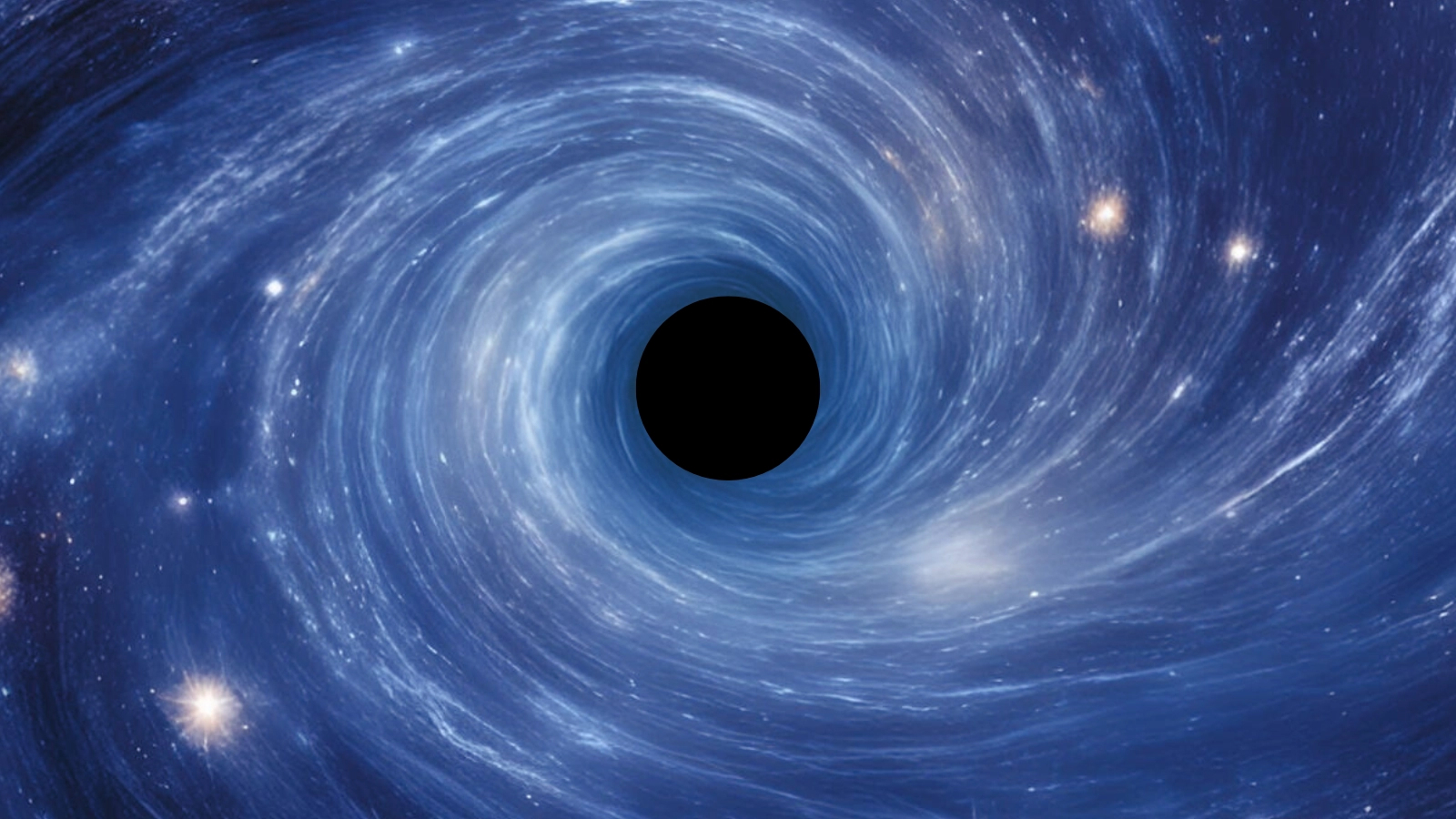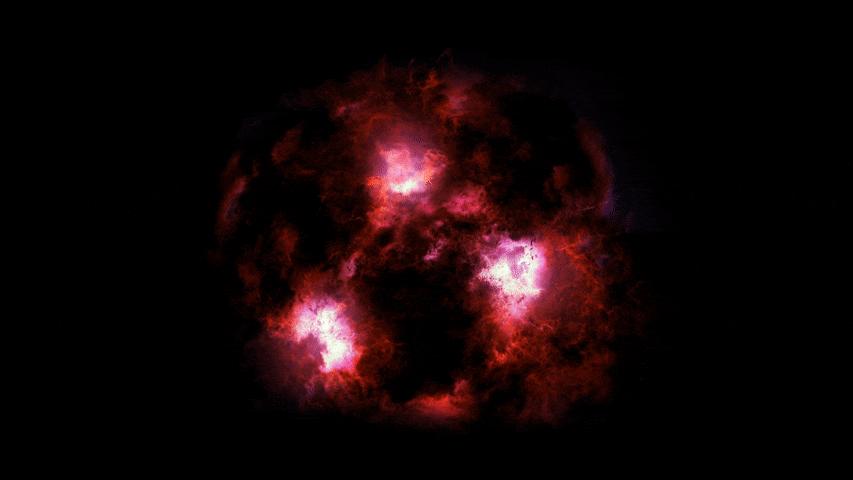When you buy through links on our site , we may earn an affiliate commission . Here ’s how it works .
Just four routine underpin the laws of cathartic . That ’s why scientist have for decades looked for any discrepancies in these so - predict fundamental constants . determine such a magnetic declination would rock the very foundation of modern skill .
Not to mention , it would ensure at least one golden research worker a gratis trip to Stockholm , a lustrous young gold medal and a million bucks .

Gravity arises from the distortion of space-time itself.
latterly , a pair of astronomer plow to one of the previous stars in the macrocosm to test the constancy of one of the adept of thefour rudimentary force of nature — gravity . They looked back in time over the past few billion years for any inconsistencies .
Not to give away the full story , but noNobel Prizeswill be awarded just yet .
Related : The 12 Strangest object in the Universe

The G-man
We take Newton ’s gravitative constant quantity ( denoted plainly by " G " ) for granted , in all likelihood becausegravityis pretty predictable . We call it Newton ’s gravitational invariable because Newton was the first person to really demand it to help describe his celebrated laws of motion . Using his newly cook up tartar , he was capable to stretch forth hislaws of motionto explicate the behaviour of everything from Malus pumila falling from a Sir Herbert Beerbohm Tree to the orbits of the planet around the sun . But nothing in his math told him just how impregnable gravity ought to be — that had to be experimentally measured and slip in to make the law work .
And it ’s basically been that agency for centuries — measure gm on its own and plugging it into the equation when needed . Nowadays , we have a more sophisticated understanding of sobriety , thanks toEinstein ’s theory of general theory of relativity , which describes how gravity arise from the distortion of space - time itself . And one of the basis of relativity is that physical jurisprudence should stay the same in all mention systema skeletale .
Related:8 Ways you’re able to See Einstein ’s Theory of Relativity in Real Life

This think of that if one observer in a special credit frame — say , someone standing on the surface of the Earth , or float out in the eye of space — measures a particular long suit of gravitational attraction ( Newton ’s G ) , then that same value should lend oneself equally all throughout infinite and time . It ’s only baked into the maths and fundamental working assumptions of Einstein ’s theory .
On the other hand , we love that general relativity theory is an incomplete theory of gravity . It does n’t apply to the quantum realm — for case , the itty - bitty particle that make up an electron or a proton — and the search is on to find a true quantum theory of somberness . One of those candidates for such a hypothesis is called drawstring theory , and instring theorythere is no such thing as number that just want to be throw out in .
In string theory , everything we fuck about nature , from the number of particles and forces to all their dimension , including the gravitative invariable , must uprise course and elegantly from themathematicsitself . If this is true , then Newton ’s gravitative constant is n’t just some random number — it ’s an outgrowth of some complicated cognitive operation operating at the subatomic level , and it does n’t have to be constant at all . And so in chain theory , as the universe develop and changes , the central constant quantity of nature might just change along with it .

All of this begs the question : Is Newton ’s constant really unremitting ? Einstein gives a firm and clearyes , and the string idealogue give a house and clearmaybe .
It ’s time to do some tests .
Einstein on trial
Over the preceding few year , scientist have devised very sensitive experiments of the strength of sobriety on Earth and in our nearby locality . These experiment give some of the tight constraint on variations in G , but only over the past few years . It could be that Newton ’s unremitting varies fabulously easy , and we just have n’t been looking cautiously for long enough .
Related:6 Weird Facts About Gravity
On the other death of the spectrum , if you monkey around with the fundamental invariable of nature , you ’re go to bug out messing up the purgative of the early universe , which is visible to us in the form of what ’s call thecosmic microwave background . This is the afterglow light radiation pattern from when the world was only a few hundred thousand year one-time . Detailed observations of that background light also place constraints on the gravitational constant , but these constraint are much less precise than those find from tests we can do in our own backyard .

latterly , astronomers have concocted a trial of variations in G that strikes a good middle reason between these two extremes , which they describe online in the preprint journalarXiv . It ’s a comparatively high - preciseness trial ; not as precise as Earth - establish ones but far better than the cosmic ones , and it also has the benefit of spanning literally 1000000000000 of days .
It plow out that we can look for changes in Newton ’s gravitational invariable by looking at the wobbling of one of the oldest star in the cosmos .
It’s in the wiggle
The Kepler space scope is famous for hunting for exoplanets , but in general it ’s just really good at star at stars for farsighted period of time , look for even the slender variation . And some of those variations just derive from the fact that stars , well , vary in brightness . In fact , virtuoso pulse and quiver from sound waves crash around inside of them , just like earthquakes — both are made of materials ( a superhot and dense plasma in the instance of the sun ) that can vibrate .
These quake and quivers on the surface of the star affect its cleverness and tell apart us about the interior structure . A star topology ’s interior depends on its mass and old age . As stars develop , both the size of the effect and the kinetics of all its inner layer change ; those change dissemble what ’s going on at the Earth’s surface .
Related:15 Amazing Images of Stars

And if you set off mess around with the constants of nature , like Newton ’s G , it change how mavin develop over the course of their lifetimes . If Newton ’s constant quantity really is invariant , then stars should slowly increase in brightness and temperature over clip , because as they burn atomic number 1 in their cores , they result behind an neutral lump of helium . This helium gets in the path of the fusion process , reducing its efficiency , forcing stars to sunburn at a faster pace to maintain equilibrium , get hotter and brighter in the process .
If Newton ’s invariable is tardily decreasing with time , this unconscious process of brightening and heating plant will engage on much faster timescales . But if Newton ’s constant behaves the opposite way and steadily increases with time , stars will actually dip in temperature for a while , then hold that temperature ready while ratchet up in luminance as they get on .
But these change are really ostensible only over very long sentence periods , so we ca n’t really look to our own Sunday — which is about 4.5 billion age quondam — as a skillful example . Also , self-aggrandizing stars do n’t have farsighted lives , and they also have improbably complicated interiors that are difficult to posture .

In comes KIC 7970740 to the delivery , a star only three - quarters the mass of our sun that ’s been burning for at least 11 billion years . A perfect laboratory .
After star at this star , astronomer bring years of Kepler data and liken it with various model of the star ’s phylogeny , including those with variations in Newton ’s G. Then , they tied those models to observation of the seismology — the wiggles — on the surface . Based on their observations , Newton ’s constant quantity really is constant , at least as far as they can tell , with no changes detected at the level of 2 parts in a trillion ( like know the space between Los Angeles and New York City to the width of a individual bacterium ) over the retiring 11 billion eld .
Where does Newton ’s never-ending ejaculate from and how does it remain so unceasing ? We do n’t have an result to that interrogation , and as far as we can evidence , Newton is n’t go anywhere anytime before long .

Paul M. Sutteris an astrophysicist atThe Ohio State University , legion ofAsk a SpacemanandSpace Radio , and source ofYour Place in the Universe .
to begin with published onLive Science .










